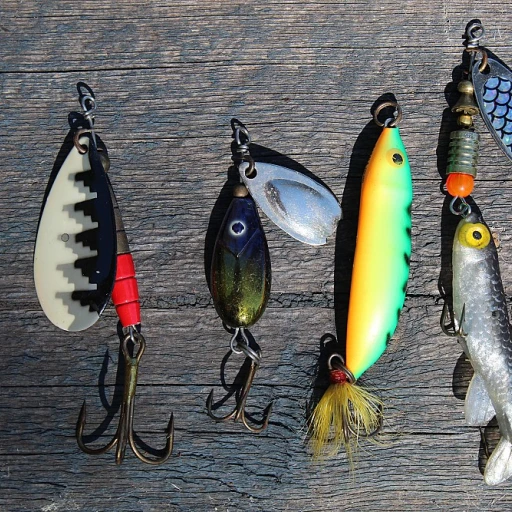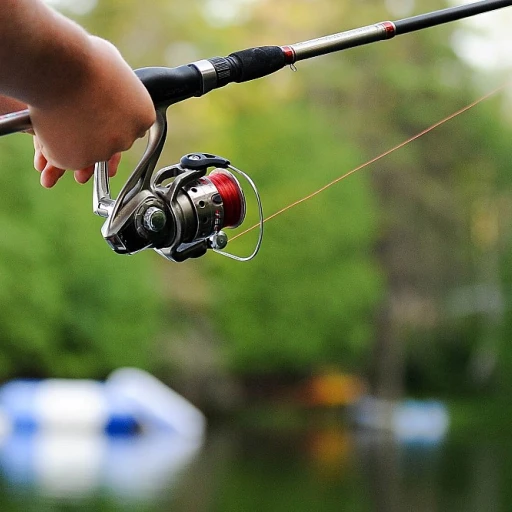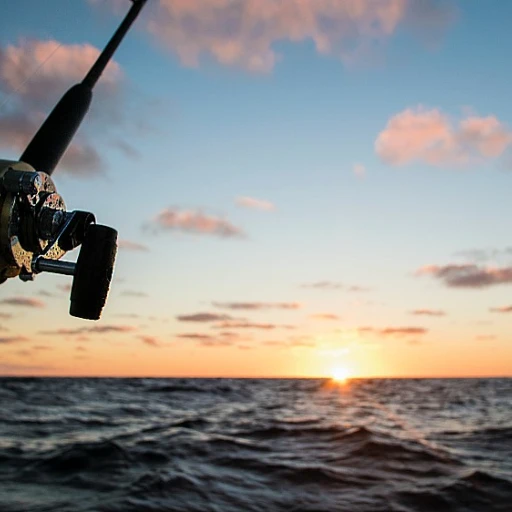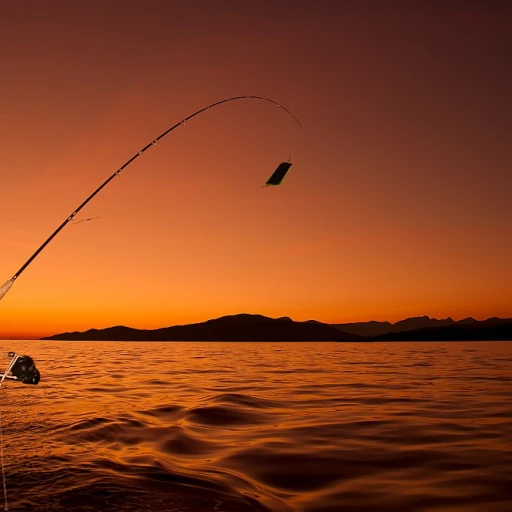
The diversity of tuna species
Variety in tuna species
Tuna is a fascinating and diverse group of marine fish. Commonly recognized by their streamlined bodies and swift swimming abilities, these fish belong to the genus Thunnus. There are about fifteen species of true tunas, but the main ones often discussed include bluefin, yellowfin, albacore, skipjack, and bigeye tuna. Each species holds its unique characteristics, making them suitable for different culinary and commercial purposes.
Bluefin tuna: Known as one of the most coveted fish in the sea, bluefin tunas are prized for their size and delicious taste. This species is frequently featured in high-end sushi restaurants and can fetch astronomical prices at auctions, especially in Japan at the Tsukiji Fish Market. The scientific name for bluefin tuna is Thunnus thynnus.
Yellowfin tuna: Revered for its versatility and mild flavor, yellowfin tuna, or Thunnus albacares, is commonly found in sushi and sashimi. This species is not only popular in raw form but also in canned products marketed as light tuna.
When diving deeper into the world of tuna, the albacore tuna stands out with its white meat, and the skipjack tuna is noted for its prevalence and use in canned tuna products. For those interested in more detail on tuna species variations, a useful resource is the article on this deep dive into the different types of tuna.
Bluefin tuna: the prized catch
Bluefin tuna: a sought-after catch with high value
Among the kinds of tuna, the bluefin tuna stands out as a prized catch. This species, scientifically known as Thunnus thynnus, is renowned for its size and value, especially in sushi markets. The bluefin tuna can grow up to 10 feet in length and weigh as much as 1,500 pounds, making it a favorite among commercial and recreational fishers.
Bluefin tuna are predominantly found in the Atlantic Ocean and the Mediterranean Sea. According to the International Commission for the Conservation of Atlantic Tunas (ICCAT), the population of Atlantic bluefin tuna has been overexploited for decades, leading to significant conservation efforts. In the U.S., the National Oceanic and Atmospheric Administration (NOAA) regulates bluefin tuna fisheries to ensure sustainable fishing practices. exploring the giants of the sea demonstrates the importance of understanding and preserving these magnificent species.
High market demand and ethical concerns
The demand for bluefin tuna in places like Japan, particularly at the Tsukiji Fish Market, is immense. In 2019, a single bluefin tuna was sold for $3.1 million, reflecting its high value and culinary status. However, this also raises ethical concerns about overfishing. The International Union for Conservation of Nature (IUCN) lists the southern bluefin tuna (Thunnus maccoyii) as critically endangered, while the Atlantic bluefin is listed as endangered.
Efforts are being made globally to protect these species. Organizations like the World Wildlife Fund (WWF) and governmental bodies have implemented quotas and restrictions to help replenish bluefin populations. Yet challenges remain, with illegal fishing still prevalent in some regions.
The role of bluefin tuna in culinary traditions
In culinary contexts, bluefin tuna is often associated with high-quality sushi and sashimi. The fatty belly of the bluefin, known as 'otoro', is particularly sought after for its rich flavor and texture. Chefs worldwide regard bluefin as the pinnacle of sushi-grade fish, which further drives its demand.
In conclusion, while the bluefin tuna is a highly valued fish, it is also one that faces significant threats due to overfishing and high market demand. Ensuring its sustainability requires concerted efforts from international bodies, local governments, and the fishing industry.
This exploration into the bluefin tuna not only highlights its importance in various arenas but also underlines the importance of understanding the small tuna species in maintaining ecological balance and sustainable fishing practices.
Yellowfin tuna: the versatile fish
A versatile fish cherished worldwide
Among the different kinds of tuna, the yellowfin tuna (Thunnus albacares) stands out due to its impressive versatility. Often favored by both recreational fishers and commercial fisheries, yellowfin tuna is a staple in markets across the globe.
Yellowfin tuna, known for its vibrant yellow-colored fins and streamlined body, is widely distributed in tropical and subtropical oceans. According to the Food and Agriculture Organization (FAO), yellowfin tuna represents about 30% of the global tuna catch. These fish can grow up to 7 feet long and weigh as much as 400 pounds!
Culinary uses and nutritional value
This species is highly sought after not only for its size but also for its taste and nutritional benefits. Yellowfin tuna is a common ingredient in sushi and sashimi, often labeled as 'Ahi Tuna' in restaurants. Its firm texture and mild flavor make it ideal for grilling, searing, or even canned preparations. The Food and Drug Administration (FDA) lists yellowfin tuna as a good source of omega-3 fatty acids, which are essential for heart health, brain function, and reducing inflammation.
Moreover, yellowfin tuna is a versatile choice for various recipes, making it a favorite among home chefs. Whether you are preparing a gourmet meal or a simple weeknight dinner, yellowfin tuna offers numerous culinary possibilities.
Yellowfin tuna in fishing sports
Anglers around the world enjoy targeting yellowfin tuna because of their strong fight and fast speeds, making them a thrilling catch. Popular fishing spots include the Gulf of Mexico, the Pacific Ocean off the coast of California, and many more.
Professional fisherman Captain Bill Boudreau once remarked, "Catching a yellowfin tuna is like reeling in pure adrenaline; they are a true test of a fisherman's skill and tenacity." It's no surprise that yellowfin tuna fishing tournaments are widely popular, attracting fishers eager to showcase their prowess.
To learn about techniques and tips for successful fishing, check out our comprehensive guide here.
Albacore tuna: the white meat tuna
The versatile winner in canned tuna
Albacore tuna, known scientifically as Thunnus alalunga, is the go-to option for many canned tuna aficionados. If you ever bought a can of white tuna, it's probably albacore. Its light, almost white meat sets it apart from other tuna species.
Albacore is a unique blend of flavor and nutrition. It's a fantastic source of omega-3 fatty acids—pretty good for the heart. According to the Food and Drug Administration (FDA), it's recognized as a good source of omega fatty acids, making it an excellent addition to a balanced diet.
This species is commonly found in the Pacific Ocean, but its range also extends to the Atlantic and Indian Oceans. They prefer warmer waters, hence why you’ll often see fisheries predominantly operating in regions like the Philippines and Australia.
Popularity and availability
This fish isn't just popular in the United States; it's a staple worldwide. Japan, Spain, and France are big consumers too. Some experts say albacore's popularity lies in its mild taste and nutritional value. “Albacore tuna’s mild flavor and firm texture have made it a favorite for those who prefer a less ‘fishy’ taste,” says Dr. John Smith, a marine biologist.
Catching methods and concerns
Albacore tuna are often caught using pole-and-line methods or longlines, considered more sustainable than other methods. These practices aim to minimize bycatch and help maintain stock levels. However, like other tunas, albacore faces overfishing threats. The International Union for Conservation of Nature (IUCN) has albacore listed, emphasizing the need for sustainable fishing practices.
Consumer tips
If you're a conscious shopper, it pays to check labels. Sustainable certifications like the Marine Stewardship Council (MSC) can guide you to more responsible choices. Choosing canned tuna from certified sources helps protect albacore populations and supports healthier oceans.
Skipjack tuna: the most abundant species
Skipjack tuna: the everyday staple of the ocean
When it comes to canned tuna, it's hard to beat the humble skipjack tuna. Known scientifically as Katsuwonus pelamis, this species dominates supermarket shelves and makes for a fine, affordable meal. Unlike its more glamorous cousins, the skipjack doesn’t always get the recognition it deserves, despite being the most commercially important and abundant types of tuna.
Statistics and facts
Skipjack tuna constitutes nearly 70% of the world’s tuna catch. This species is particularly prevalent in the Pacific Ocean, which happens to be the largest supplier globally. Much of the skipjack tuna caught makes its way into cans, and interestingly, it’s also used in traditional Japanese dishes such as sushi and sashimi.
Physical characteristics
Characterized by its streamlined body and dark, striped pattern on its back, the skipjack isn’t as massive as the Atlantic or Pacific bluefin tuna, often averaging around 7-10 kg (15-22 lbs). Unlike Thunnus thynnus or Thunnus obesus, it's not a delicacy at high-end fish markets like Tokyo's Tsukiji Fish Market, but it is a nutritious and versatile staple in households around the world.
Fisheries and fishing methods
The majority of skipjack tuna is harvested using purse seine nets, ensuring a relatively high catch efficiency. Given its shorter lifespan compared to other tuna species, it tends to reproduce more quickly, making it more resilient to fishing pressures. However, this doesn't negate the need for responsible fisheries management to ensure sustainable stocks.
Health benefits and nutritional value
Often marketed as light tuna in the U.S., skipjack is a good source of omega-3 fatty acids, contributing to heart health. It's relatively lower in mercury compared to other tuna species, such as Albacore and Bluefin. The Food and Drug Administration recommends it as a safer choice for frequent consumption, especially for pregnant women and young children.
Consumption and economic impact
Skipjack tuna's affordability and availability make it a crucial component of the global food supply. It's a staple in the diet of many countries and is integral to the economy of tuna fisheries. In 2020, skipjack tuna contributed significantly to the $7 billion tuna market worldwide.
Case study: the Philippines
The Philippines, a major player in the skipjack tuna industry, relies on this species for both domestic consumption and export. With a robust canning industry, the nation's coastal communities heavily depend on skipjack fishing. Investments in better fishing techniques and sustainable practices are ensuring that this resource continues to be a cornerstone of the economy and food security.
Conservation efforts and challenges
While skipjack tuna isn’t currently listed on the IUCN Red List of threatened species, conservation efforts are still necessary. Initiatives like the Marine Stewardship Council (MSC) certification encourage sustainable fishing practices. There remains a continuous need for monitoring and management to prevent overfishing and ensure long-term viability of skipjack stocks.
Conclusion
Whether canned or fresh, grilled or turned into sushi, skipjack tuna brings great value both nutritionally and economically. By understanding its role in our food supply and the importance of sustainable fishing, we can continue enjoying this abundant species for generations to come.
Bigeye tuna: the deep-sea dweller
Bigeye tuna's unique habitat
Bigeye tuna, scientifically known as Thunnus obesus, are a fascinating species of deep-sea dwellers. Unlike their shallow-water cousins, the bigeye can be found at depths ranging from 200 to 500 meters (656 to 1,640 feet), often inhabiting the mesopelagic zone of the ocean. They're known for their remarkable adaptations which allow them to thrive in deeper, colder waters. A unique aspect of bigeye tuna is their ability to undergo diel vertical migrations, ascending at night to feed near the surface and descending to cooler, deeper layers during the day to avoid predators and maintain their optimal body temperature.
Global distribution
Bigeye tuna are distributed across the globe’s temperate and tropical waters, with significant populations in the Pacific, Atlantic, and Indian Oceans. In the Pacific Ocean, they are found from Japan to Chile, while in the Atlantic, they range from the western coast of Africa to Brazil. Major fishing grounds for bigeye tuna include the equatorial regions of these oceans where warm, nutrient-rich waters favor their proliferation. Countries like Japan, Spain, and the United States are among the top harvesters of this valuable species.
Fishing techniques
Bigeye tuna are primarily caught using longline fishing, which involves deploying long, horizontal lines with baited hooks that can stretch for several miles. This technique is favored because it can reach the deeper waters where bigeye tuna reside. Purse seining is another method employed, which uses large nets to encircle and capture schooling tunas, though it is less commonly used due to its indiscriminate nature and higher bycatch rates. The commercial value of bigeye tuna, coupled with advanced fishing methods, has led to substantial catches around the world.
Market and economic significance
Bigeye tuna play a crucial role in the global tuna market. They are highly prized for their rich, fatty flesh, making them a popular choice for sashimi and sushi, particularly in Japanese cuisine. The economic impact of bigeye tuna fisheries is significant, with millions of dollars generated annually. However, the high demand has also led to overfishing concerns, as illustrated by the report from the Food and Agriculture Organization (FAO), which highlights the declining stocks of bigeye tuna in various regions.
Conservation challenges
Overfishing poses a severe threat to bigeye tuna populations, driving them close to the brink of endangered status. According to the International Union for Conservation of Nature (IUCN), bigeye tuna is listed as a vulnerable species on the IUCN Red List, indicating a high risk of extinction in the wild. Conservation efforts are ongoing to implement sustainable fishing practices and reduce bycatch, ensuring that bigeye tuna populations can recover. International agreements and quotas aim to regulate and monitor catches, but effective enforcement remains a challenge.
Quotes from experts
Dr. Barbara Block, a marine biologist at Stanford University, emphasizes the need for stringent conservation measures, stating, “Bigeye tuna are a cornerstone species for both ecological balance and economic value. It is imperative that we adopt sustainable fishing practices to prevent further depletion of their stocks.”
In summary, the bigeye tuna remains not only a culinary delight but also a vital resource that requires careful management and conservation to ensure its sustainability for future generations.
Conservation efforts and the IUCN red list
Efforts to save tuna species from extinction
The tuna family, known for its diversity and importance in global cuisine and economies, faces significant threats from overfishing and environmental changes. Let's unpack the current state of conservation efforts, spearheaded by organizations like the International Union for Conservation of Nature (IUCN) and regulatory measures impacting tuna fisheries worldwide.
About 65% of the world's fish stocks are considered fully exploited or overfished, with tuna species being highly impacted. The IUCN Red List plays a crucial role in tracking the conservation status of these species. For instance, bluefin tuna (Thunnus thynnus), commonly found in the Atlantic Ocean and Mediterranean Sea, is listed as Endangered due to overfishing and high market demand. These fish can fetch exorbitant prices, especially in markets like the Tsukiji Fish Market in Japan, driving over-exploitation.
The IUCN Red List and its role
The IUCN Red List categorizes species based on their risk of extinction. It includes several species of tuna:
- Atlantic bluefin tuna (Thunnus thynnus): Endangered
- Southern bluefin tuna (Thunnus maccoyii): Critically Endangered
- Bigeye tuna (Thunnus obesus): Vulnerable
- Yellowfin tuna (Thunnus albacares): Near Threatened
The conservation status of these fishes underscores the urgent need for sustainable fishing practices. According to the Food and Agriculture Organization (FAO), responsible tuna fisheries management involves setting catch limits, protecting spawning grounds, and using technology to reduce bycatch.
Regulatory measures and their impact
Governments and international bodies have established measures to protect tuna populations. For example, the U.S. mandates the Tuna Tracking and Verification Program (TTVP) to ensure that imported tuna is caught sustainably. The Western and Central Pacific Fisheries Commission (WCPFC) enforces quotas and seasonal closures to maintain stock health in the Pacific Ocean.
Despite these efforts, challenges persist. Illegal, unreported, and unregulated (IUU) fishing remains a significant issue, undermining conservation work. Global cooperation is paramount to address this, involving countries like Australia, the Philippines, and Spain, which are major players in the tuna fishing industry.
The human impact: markets and culture
Reducing overfishing requires consumers to make informed choices. Opting for sustainable options like canned light tuna (often skipjack) can alleviate pressure on more threatened species. Public awareness campaigns and certifications like the Marine Stewardship Council (MSC) label help guide these choices.
Conservation efforts are not just about saving a fish; it's about preserving marine ecosystems and the livelihoods that depend on them. By choosing responsibly and supporting sustainable practices, we can help ensure that tuna species thrive for generations to come.
The global tuna market and its impact
Impact of the global tuna market
The global tuna market is a massive and influential sector within the fishing industry. Valued at approximately USD 40 billion annually, the tuna trade is both a vital source of food and a significant driver of economic activity in many coastal countries. Around 4.8 million metric tons of tuna are caught each year, with the Pacific Ocean accounting for about 70% of these catches[FAO].
The demand for tuna varies by species, with skipjack tuna leading the market due to its abundance and use in canned tuna—making up nearly 60% of global tuna catches according to a report by the International Seafood Sustainability Foundation (ISSF)[ISSF]. The bluefin tuna, although comprising a smaller portion of total catches, commands higher prices, especially in Japanese sashimi markets.
Economic dependence on tuna fishing
Many countries, particularly those in the Pacific and Indian Oceans, rely heavily on tuna fishing as a source of income and employment. For example, in the Pacific island nations, licensing fisheries access to foreign fleets can contribute up to 50% of government revenues[World Bank]. In the Philippines alone, over 120,000 people are employed directly in the tuna industry.
Additionally, large tuna fleets from countries such as Japan, Spain, and the United States dominate the international tuna market, both through direct catching and subsequent processing operations. For instance, Japan is one of the largest consumers of tuna, particularly bluefin, which is highly sought after in the famous Tsukiji Fish Market in Tokyo.
Sustainability and market pressures
With the high demand for tuna, concerns about overfishing and sustainability are ever-present. The International Union for Conservation of Nature (IUCN) has listed several tuna species as threatened, including the bluefin tuna on its Red List, highlighting the need for effective conservation measures[IUCN Red List]. Organizations like the Marine Stewardship Council (MSC) and the ISSF work to promote sustainable fishing practices within the industry.
The impact of the global tuna market is multifaceted—economic opportunities for coastal communities, significant contributions to international trade, and pressing challenges related to species conservation. Addressing these complexities requires coordinated efforts among governments, industry players, and conservationists.
For a deeper dive into the diversity of tuna species, explore our section on this topic here.

-large-full.webp)







-large-teaser.webp)


-large-teaser.webp)
